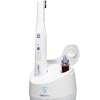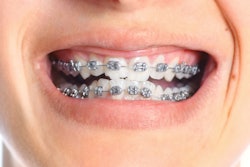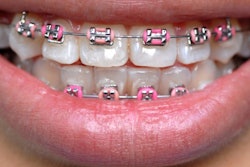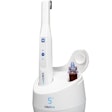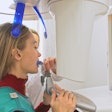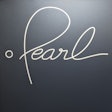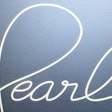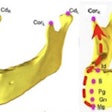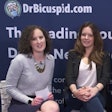
First-year dental students in Hong Kong enjoyed learning about tooth and jaw anatomy more when their lessons included human skulls, according to a study published on March 29 in Anatomical Sciences Education.
The students in the study learned about skull anatomy with cone-beam CT (CBCT) and either a standard lecture or a lecture with skulls. The students who had lectures with skulls rated their experience better than those with a standard lecture, but the researchers also found no difference in learning outcomes between the two groups.
"Students perceived to learn more by using skulls, but their objective learning outcomes were not significantly affected," wrote the authors, led by Fabio Savoldi, from the University of Brescia orthodontics department in Brescia, Italy. "A discrepancy seems to exist between students' perception of learning and their effective performance."
The University of Hong Kong's dental school includes a six-year Bachelor of Dental Surgery (BDS) program. In their first/freshman year, the students learn dental anatomy, including the anatomy of teeth, orofacial soft tissue, and orofacial bones.
The authors wondered whether the use of CBCT imaging could help teach these students essential dental anatomy. To find out, they enrolled the vast majority of the first-year undergraduate class in their study.
All 64 of the enrolled dental students watched a CBCT demonstration where a faculty member used a CBCT imaging machine to scan and analyze a human dry skull. Half of the students also viewed a standard lecture where a faculty member presented 30 slides on human dental anatomy, while the other half participated in a skull lecture where they received their own set of dry skulls and mandibles for observation.
The students who watched a CBCT demonstration followed by a lecture with skulls rated their learning experience the highest. Students who received a skull lecture were also more likely to say the workshop improved their understanding of the topic than those who received a standard lecture.
"Compared to a conventional lecture, the use of skulls may have obtained a better engagement, leading to a greater overall satisfaction," the authors wrote. "In fact, providing a hands-on experience on real biological material can be more attractive as it is closer to a real patient and may stimulate interest to details."
However, when the authors tested the students on their dental anatomy knowledge, the students who received a skull lecture didn't perform any better than their peers. In fact, students who watched a standard lecture followed by a CBCT demonstration performed best on a survey testing their dental anatomy knowledge (81.6%), whereas those who participated in a skull lecture followed by a CBCT demonstration performed the worst (72.9%).
"Although a difference of 8.7% may be relevant in terms of learning outcome and a medium/large effect size was present, no significant difference was present," the authors wrote.
Interestingly, when students left comments, those who received skulls focused on the benefits of having a skull right in front of them when learning about dental anatomy. Meanwhile, those who received a standard lecture wrote about the benefits of the CBCT demonstration.
"The CBCT demo was interesting, lecture is kind of dry," one student wrote.
The findings demonstrate that although students like learning with skulls, CBCT may be an adequate method to introduce fledgling dental students to complex dental anatomy topics.
"Although no significant differences were present among different teaching methods, the standard lecture followed by CBCT showed the best learning outcome and consistency," the authors wrote. "Since the skull is a complex 3D structure, it is important to guide students in the gradual buildup of spatial information through two-dimensional images."
